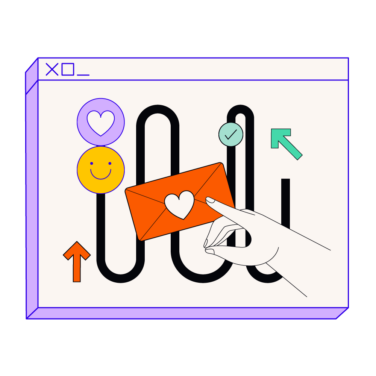How companies respond to COVID-19—how they approach customer experience during crisis times—plays a key role in customer decisions. Company leadership and actions during the Covid-19 crisis has been placed under the spotlight like never before.
This is a time when performance will be judged by how a company and its leadership serve everyone and fulfill a higher purpose.
Hubert Joly, ex. CEO Best Buy
The following 6 steps provide a path to successful customer experiences faced in these unique and challenging times.
1. Set A Clear Crisis Vision, And Enable Service Teams To Deliver Upon It
It’s important for your whole team to understand your organizations’ vision for crisis response, and how this will manifest itself in customer services and communications. This way you can act on it as a unified organization, and act quickly.
- Have you set a crisis vision that informs the response plan?
- How might you ensure that teams are working on the same guiding principles for crisis response and management?
- Are staff trained to manage customers in challenging situations?
- How might you pivot your resources to support a new channel? If your customers suddenly want to shop online, or to self-serve, and you’re not ready to support that digital experience, you can be sure that competitors will step in.
- Are back-office teams able to contribute further to crisis customer support and service - expediting delivery times, proactively reaching out to vulnerable customers, for example.
2. Understand And Empathize With New Customer Situations
When crises strike, there’s difficult decisions that have to be made, and in some cases your customers will make decisions that impact your business negatively. Customers may decide to leave, stop payments, or cancel orders mid-way through, or just stop communicating entirely to focus on more important matters.
This can be extremely challenging to front-line staff and executives alike, but as the Maya Angelou saying goes, “People don’t forget how you made them feel”.
The key to success is to start from a point of understanding and empathy, to build trust and keep the door open for longer-term relationships.
- How might you quickly develop customer understanding during a crisis?
- Can you plan for multiple scenarios quickly, in order to adapt faster as situations evolve?
- How might you develop crisis response teams in order to train others in effective crisis management?
3. Prioritize Customers At Risk, Fast
In a crisis situation, it’s key to focus on the fundamentals first - keeping people safe, secure and healthy. In the current Covid-19 crisis, many organizations have shifted the focus of call-centers to serving critically vulnerable customers first, deferring more common services in order to focus on safety and health concerns first.
- How can you understand the critical needs your customers may have from your product or service?
- How can you segment customers quickly to serve those in danger, or most vulnerable?
- How might you act to meet the needs of vulnerable customers? In some cases, it may even require going above and beyond the usual boundaries of your business relationships.
4. Set Clear Customer Direction, With Useful Options And Shortcuts
Customers may need urgent information, or they may wish to make rapid changes, consider how you can quickly support these crisis requests, and the follow-up actions that will be required. Take the time to understand your customer situation, and how their needs have changed as a result of a crisis.
- How might you better support changed customer actions?
- Are there options for future follow-ups or support?
- Can you remove steps to serve customers faster—such as through self-service, contactless payment, digital forms, or other types of digital experience tools?
Related: Best Customer Success Software For CX Teams
5. Meet Your Customers Where They Are
A major storm impacting an airline, a change in policy impacting product costs, or a major global crisis like Covid-19. In a crisis, common service channels can suddenly be overloaded, and/or customers may move elsewhere.
Twitter can be fertile ground for a barrage of customer complaints during a crisis, yet your organization may not be ready for solving customer problems at scale on this platform.
- How might you adapt your presence on appropriate real-time social channels to proactively address potential customer experience issues?
- How might you leverage technology (your social media insights, sentiment analysis tools, CX and communication tools, etc) to understand where your customers are coming from?
- How might you acknowledge your customer’s change in demands, provide understanding and appropriate direction to support channels?
6. Be Transparent And Honest As Stories Evolve
Admitting your mistakes is hard, and asking for help can be even harder, but when a crisis strikes the speed of truth can be a critical differentiator. Customers in crisis times can be tolerant of changes to services, such as delays or disruption, but they need to know what’s happening, rather than finding out too late.
- How might you utilize the data insight and experience of your teams’ to deliver clarity and truthful information to your customers to build their confidence in your responses?
- How might you better share situational information as it changes, e.g. regular updates, live data, or daily media kits?
- How might you increase your presence on appropriate real-time social channels to proactively address potential customer issues?
How Has Your Company Changed The Customer Experience During Crisis Times?
Have you made changes to your customer experience during the Covid-19 crisis? Share your thoughts on the steps you’ve taken to maintain good relationships with your customers.
Sign up to The CX Lead newsletter for updates on the latest articles from CX experts.
Related Read: 4 Types Of Customer Data You Should Be Using


